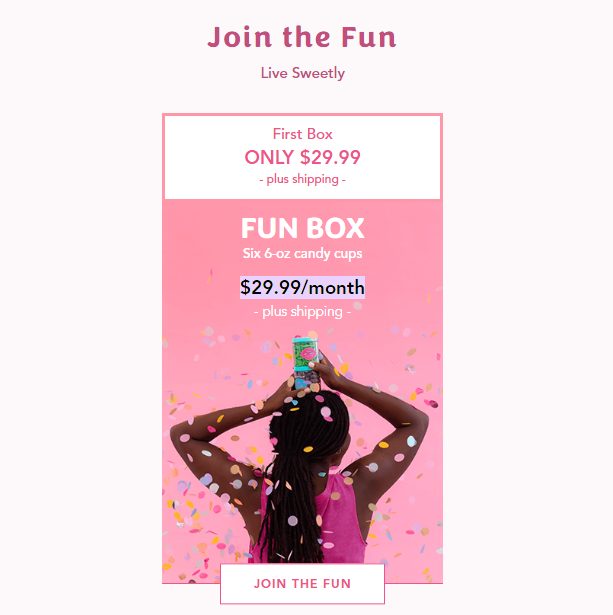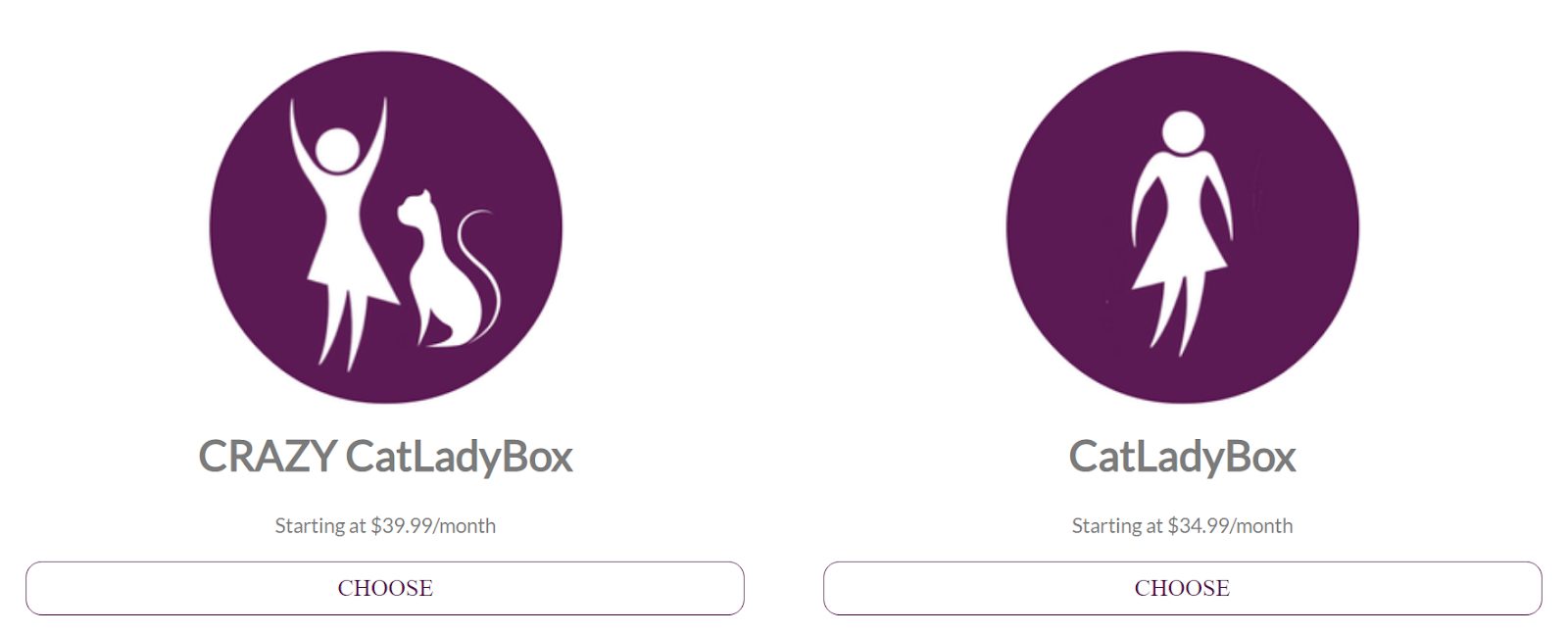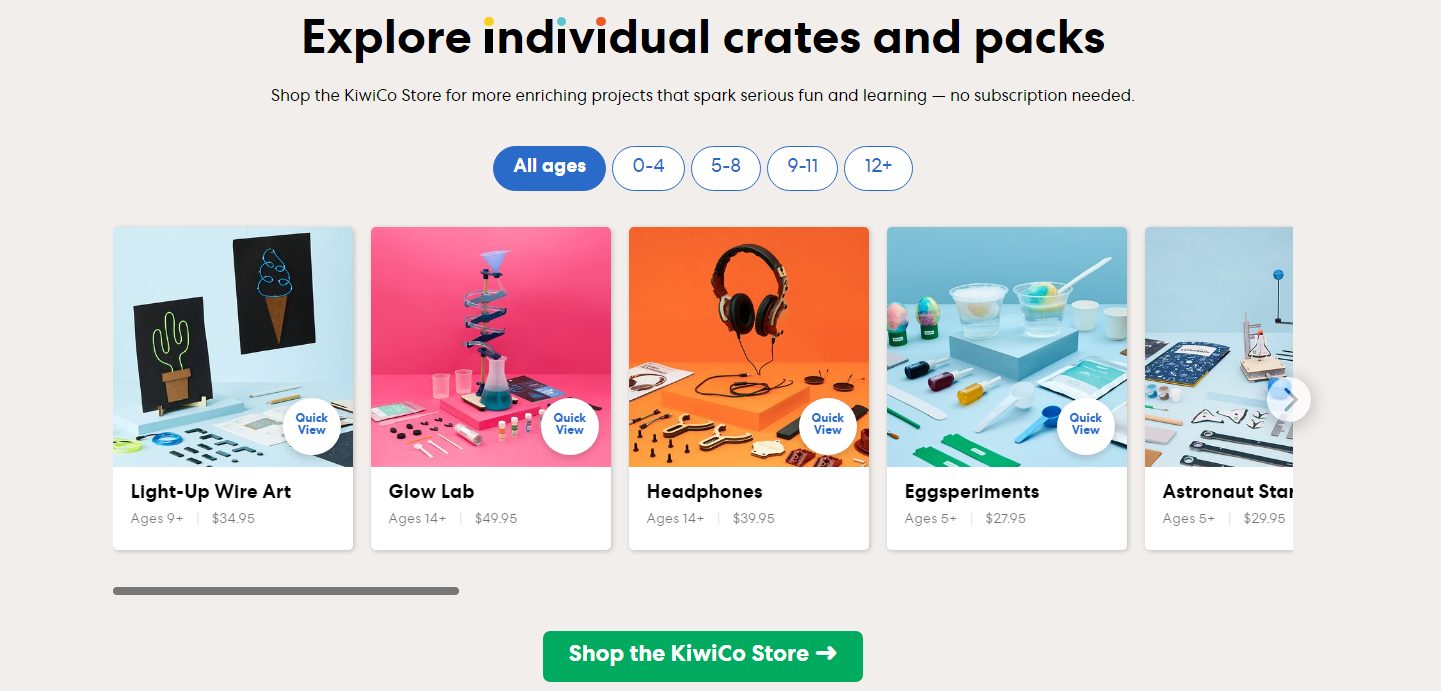It’s a great time to be in the subscription box business.
Subscription boxes have been on the rise for years, and the COVID-19 pandemic has given them a massive boost. 20% of US consumers subscribed to a box during the pandemic just to have these products available without going to a store.
And it’s not just the pandemic — 51% of shoppers get subscription boxes just to try new products.
In other words, if you’ve been dreaming of starting a subscription box business, now’s a good time to do so. But you’re going to need a plan.
Subscription boxes are competitive, and it can be hard to reach your target customers. Factors such as fulfillment and recurring billing can get complicated. To give your subscription business a chance, you need to have a comprehensive business plan.
This article will give you the information you need to create a successful subscription box business plan.
The Growth of the Subscription Box Industry
Subscription boxes began their rapid rise in popularity a little over a decade ago. Between 2010 and 2012, the world was introduced to subscription box pioneers like Birchbox, BarkBox, Dollar Shave Club, and Blue Apron.
In 2021, the global subscription box market size reached a value of $22.7 billion, and it’s expected to reach $65 billion by 2027.
While subscription boxes have been around for a while, they really took off during the pandemic. For example, boxes related to pets and animals saw a 147% growth in subscribers between 2019 and 2020, while the number of beauty box and food box subscribers grew by 120% and 100%, respectively.
Why Your Subscription Box Business Needs a Business Plan ?
Starting a subscription box company is complex. A business plan helps you put all the pieces together and achieve your business goals.
Here’s what a business plan can do for you.
Prove Your Idea is Viable
A business plan includes research and analysis of the market, your niche, and your target audience. It demonstrates how your subscription box idea will fit into the existing landscape.
Secure Funding
A business plan can help investors and lenders see your company’s value. They want to know that you not only have a fun idea but a viable plan to profit.
Keep Everyone on the Same Page
If you have multiple decision-makers in your subscription box business, a business plan keeps the entire team aligned.
Plan for Expenses
A business plan helps you set realistic expectations for your upfront and ongoing expenses. It lays out how much cash you will need and where you expect to get it.
Reduce Risks
Your business plan will identify risks and help you manage them. It will mitigate some of the uncertainty involved with starting a new business.
How to Create a Subscription Box Business Plan?
A business plan is essential for breaking into the subscription box market, but it can be intimidating to create one. It doesn’t have to be, though — just take it step-by-step, as outlined below.
1. Determine Your Niche, Target Audience, and Value Proposition
In this part of your business plan, you outline who you will be targeting, your value proposition for that audience, and why your subscription box will be successful in its target market.
Start with an idea for a niche. Is this a beauty box? A meal kit? Popular categories for subscription boxes include:
- Food
- Clothing
- Technology
- Alcohol
- Personal care and beauty
- Pets
In your business plan, describe the product you intend to sell. Next, include research to back up that idea.
Define a Problem and Solution
Every good subscription box offering solves a real problem that people have. For example, if someone wants to cook healthy meals but doesn’t want to spend time shopping and preparing ingredients, they can subscribe to HelloFresh.
Think about what problem your subscription box solves for your target audience, and add that to your business plan.
Market Validation
The next step is to gauge whether your idea is viable in its target market. This ensures you’re not wasting resources on an idea that can’t be profitable.
Market validation data you can add to your business plan includes:
- Information from interviews with customers in your target market. Does your subscription box solve a real problem they have?
- Sales numbers of your competitors.
- Keyword search volume. Are people searching for products like yours?
- Results of beta tests.
Industry Analysis
What does the current landscape look like in your industry? Include any information you have on the major players, whether the industry is growing or shrinking, and any predictions (such as technological advancements) for the industry’s future that could affect your business.
Competitive Analysis
After you’ve analyzed the industry as a whole, take a look at the competitors in your niche. Although there may be subscription boxes similar to yours, yours should have something that differentiates it. In your business plan, detail what gives your box a competitive edge.
You can also dig into which channels your competitors are using in their promotions. For example, if no one in your niche is taking advantage of influencer marketing, that’s an opportunity you can include in your business plan.
Target Market Analysis
Finally, analyze your target demographic. Assess where you expect your product to gain the most traction, and include this in your business plan.
One way to represent your target buyer is to create buyer personas for your business plan. A buyer persona is a detailed description of a fictional person representing your target audience. Include information like their:
- Name
- Age
- Location
- Language
- Income
- Spending patterns
- Interests
- Pain points
- Stage of life (whether they’re married, have children, own a home, are retired, etc.)
Once you’ve nailed down your target market, it’s time to analyze how big that market is and how well you’ll be able to penetrate it. For that, look at TAM SAM SOM:
- TAM (Total Available Market) is the total market demand for a product or service.
- SAM (Serviceable Available Market) is the segment of the TAM that is within your geographical reach.
- SOM (Serviceable Obtainable Market) is the portion of the SAM that you can capture.
2. Plan Your Subscription Box Website
If you were starting a brick-and-mortar company, you would have to make plans for your physical store. For a subscription box company, your website is your storefront. Your business plan should include your plans for the website and the tools you’ll use to make it excellent.
Choose your eCommerce Platform Wisely
Large companies might build eCommerce capabilities into their websites on their own. For most smaller businesses, however, it makes more sense to use an e-commerce platform. An eCommerce platform is a software that facilitates buying and selling online. It may offer features like inventory management, security, marketing tools, design options, and analytics.
Some of the most popular eCommerce website platforms are:
- Shopify
- WooCommerce
- BigCommerce
- Magento
You may also want to consider taking the approach of headless commerce for your eCommerce website.
Headless commerce involves decoupling the frontend (the customer-facing presentation layer) and the backend (the infrastructure that keeps the site running). Headless is growing in popularity thanks to the agility and other benefits it provides.
Research your options and include your choice in your business plan. Factors to consider include the cost of the platform, whether its traditional or headless, available features and integrations, scalability, security, and whether the design options match your brand’s aesthetic.
Relevant Read: How to start a subscription box business in shopify?
Add Subscription Management functionality
Since your business is subscription-based, you need to integrate a tool into your website that will manage eCommerce subscriptions and recurring payments. This kind of solution handles things like accepting recurring payments for your eCommerce store, helps in recovering failed payments and enables you to experiment with different pricing strategies.
For example, futuristic food maker Soylent turned to Chargebee for subscription management. Chargebee helped Soylent manage tens of thousands of subscribers with minimal engineering overhead.
Your choice of subscription management platform is important because it can provide so much more than monthly billing. Chargebee offers advanced features like localized payments, promotions, gift subscriptions, refund options, PCI compliance, and proration logic.
When you’re choosing a tool to manage subscriptions, consider the different devices and channels your customers use. Chargebee delivers a consistent customer experience to users whether they’re interacting with your site on iOS, Android, or desktop.
As with eCommerce platforms, many subscription management platforms, including Chargebee, are now headless. This makes the platform more flexible by allowing you to alter or scale each function (like billing, taxation, revenue analytics, and more) independently without breaking the systems around it.
Other Integrations for Your Subscription Box Website
There are all sorts of integrations and plugins you can use with your website to enhance your business. Shopify, for example, offers over 4,000 integrations.
These integrations expand the functionality of your website and give you the opportunity to build your ideal subscription experience for your customers. They allow your existing tech stack to work together and make it easy to add features to your site as you grow. Make sure the plugins and integrations you choose are maintained and updated regularly.
Common integrations for a subscription box business include:
- Email marketing
- CRM
- Analytics
- Accounting software
- Social media platforms
Make a list of key website integrations in your business plan.
3. Develop an Operational Plan
You’ve identified your target market, analyzed the competitive landscape, and made a plan for your business’s storefront.
Now it’s time to talk about operations. Where will you get your products, and how will you send them to your customers? The operational section of your business plan details procurement, packaging, shipping, and fulfillment.
Procurement
You can’t have a subscription box service without products to put into the box. While that might seem obvious, how to source those products is sometimes less clear.
If you’re creating your own products, include your production plan — such as which manufacturing facility you’ll use — in your business plan.
Another option is to purchase products wholesale or for a low price. Make sure the market supports a subscription box price that’s more than what you paid for the products.
Finally, some subscription boxes offer sample products from a variety of companies. It’s in the interest of the vendors to provide these samples for free or at a very low price because doing so will introduce new customers to their products.
One of the most well-known subscription boxes, Birchbox, initially relied entirely on procuring free samples from vendors.
If your subscription box follows this business model, negotiate with vendors. Show them information about your target market and buyer personas to reassure them that they’ll get repeat customers out of the deal.
Packaging
How your subscription box looks can be as important as what’s inside it. Your subscribers should know at a glance that the package they receive isn’t just any old box but an exciting monthly delivery from your company.
They might even show a friend or post the box on social media, so you want your branding to be visible and memorable.
Ideally, the packaging will fit the box’s theme. For example, Retro Pop Box has a box design with an ‘80s feel. The box for the Once Upon a Book Club looks like a book. And the team at CatLadyBox says it’s no coincidence that the box is perfectly sized for your cat to sit in.
There are digital printing services like BoxUp and PackLane that you can use to create your boxes.
In addition to the boxes’ appearance, you should consider their size and weight. Consider how many products you’ll be sending in each box to determine what the dimensions need to be. Add those details to your business plan.
Shipping
No one likes paying for shipping. Of course, a subscription box service is pretty heavy on shipping, so you have to find ways to reduce your own costs while making the shipping fee acceptable to the customer.
It’s also important for customer satisfaction that their boxes arrive on time.
Your business plan should include information on which shipping company you plan to use and how much you’ll charge the customer for shipping. Many subscription box companies offer “free shipping” by including the shipping costs in the subscription price.
Fulfillment
You’ve got the products, and you’ve got the packaging. The next thing to add to your business plan is how you’ll get the box ready to ship.
You have two choices: You can either package and ship the products yourself, or outsource the work to a fulfillment center.
Doing it yourself may be necessary if you’re procuring products from a wide variety of sources.
It can also save money when you’re a very small business, but if your business grows, it’s not economical. You may struggle to keep up with orders, leading to disorganization and errors. You may not have storage space for all of the products or be able to afford the labor costs involved with fulfillment.
Working with a fulfillment center is efficient and scalable. For example, Ipsy is able to send orders to millions of subscribers by partnering with Saddle Creek Logistics Services.
4. Write a Sales and Marketing Plan
You could have the best subscription product in the world, but if you don’t promote it well, no one will buy it.
Your investors and stakeholders know this and want to see a convincing sales and marketing strategy for your subscription box. Here are a few things you can include in this strategy.
Branding
Branding refers to the things that people associate with your company, like its name, visual style, and voice. It’s a key way that customers will differentiate your subscription box from the competition.
For example, KiwiCo boxes come in the company’s signature green color that you’ll also see in its logo.

Your business plan can include elements of branding like:
- Company name
- Logo
- Color palette
- Voice and personality
- Fonts
- Brand values
Marketing Channels
Which methods will you use to promote your subscription boxes?
Different subscription box brands rely on various channels. For example, beauty product seller Ipsy promotes its monthly Glam Bag by working with influencers who already have large followings.

Potential channels to focus on for subscription box marketing include:
- Social media
- Web content
- Paid advertising
- Influencer marketing
- Affiliate marketing
Sales Tactics
Your business plan should also include a high-level plan for your sales team.
What will your team look like? What methodologies will they use to deliver results? How will you measure their progress?
Think about the offers and promotions you’ll create. Incentives like a limited-time percentage discount can drive customers to buy a product. Think about your target customers and the offers they’re likely to appreciate and include them in your business plan.
5. Determine Costs and Upfront Investments
The average startup cost for a subscription box business is $13,936. It’s important to determine how much you’ll have to invest in your new company upfront and to include this information in your business plan.
Costs
The costs to consider including in this section include:
- Domain name and web hosting
- Procurement of products
- Software tools
- Packaging
- Shipping
- Fulfillment
- Labor
- Advertising
Investment
In your business plan, detail any investment you’ve already secured and what you predict to obtain.
6. Develop a Pricing Strategy
When a potential customer discovers your subscription box, they’ll have one question: How much does it cost?
Picking the right price point is an essential part of creating an attractive subscription box offering. In this section of your business plan, talk about how much your box will cost and why you chose that amount.
When you’re determining the cost of your subscription box, think about factors like:
- The cost of procurement, fulfillment, and shipping
- How much your competitors are charging
- The value of the product to customers
- Customer lifetime value
- Customer acquisition cost
- Churn rate
- Profit margin
You also have to consider what types of subscriptions you’ll offer. Will you have different pricing tiers, and will you offer pay-as-you-go boxes? Will you accept payment monthly, or will subscribers have to commit to a longer contract?
You have a few pricing plan options. Indicate the one you choose in your business plan.
Flat Rate
If you choose flat rate pricing, all subscriptions cost the same amount. For example, Candy Club only has one price for its candy boxes: $29.99 per month.

Tiered Pricing
Tiered pricing is extremely popular with subscription box services. With this pricing scheme, different versions of the box are created with different values.
For example, CatLadyBox has the CatLadyBox, which includes cat accessories, and the slightly more expensive CRAZY CatLadyBox, which also includes cat toys.

Pay-As-You-Go
Many subscription box companies let customers buy individual boxes with no subscription, this is called as pay-as-you-go pricing model. This is offered in addition to subscription plans and can be a good way to let customers try your product before committing to a subscription.
For example, KiwiCo lets customers shop for individual boxes on its website.

7. Create Your Financial Plan
The financial section of your business plan assures the reader that your subscription box will turn a profit.
Here’s what you need to include in this section:
- Sales forecast: Your annual revenue projections and cost of goods sold (COGS).
- Personnel plan: How much you plan to pay each of your employees.
- Break-even analysis: Determine when your business will break even and begin making a profit.
- Profit and loss statement: Your projected profits (or losses).
- Cash flow statement: How much cash you have, where it’s coming from, and when it’ll come.
- Balance sheet: A statement of your business’s assets, liabilities, and capital.
- Use of funds: Where investments will go and why.
Conclusion
The subscription box business model is more popular than ever, and your box could be the next big thing. But to achieve your idea’s full potential, you need a plan.
Use the subscription box business plan laid out by us to set goals and formulate your strategy. This plan will be valuable for internal stakeholders as well as investors and lenders. Looking for a way to manage billing for your products? Try Chargebee’s subscription box billing.

